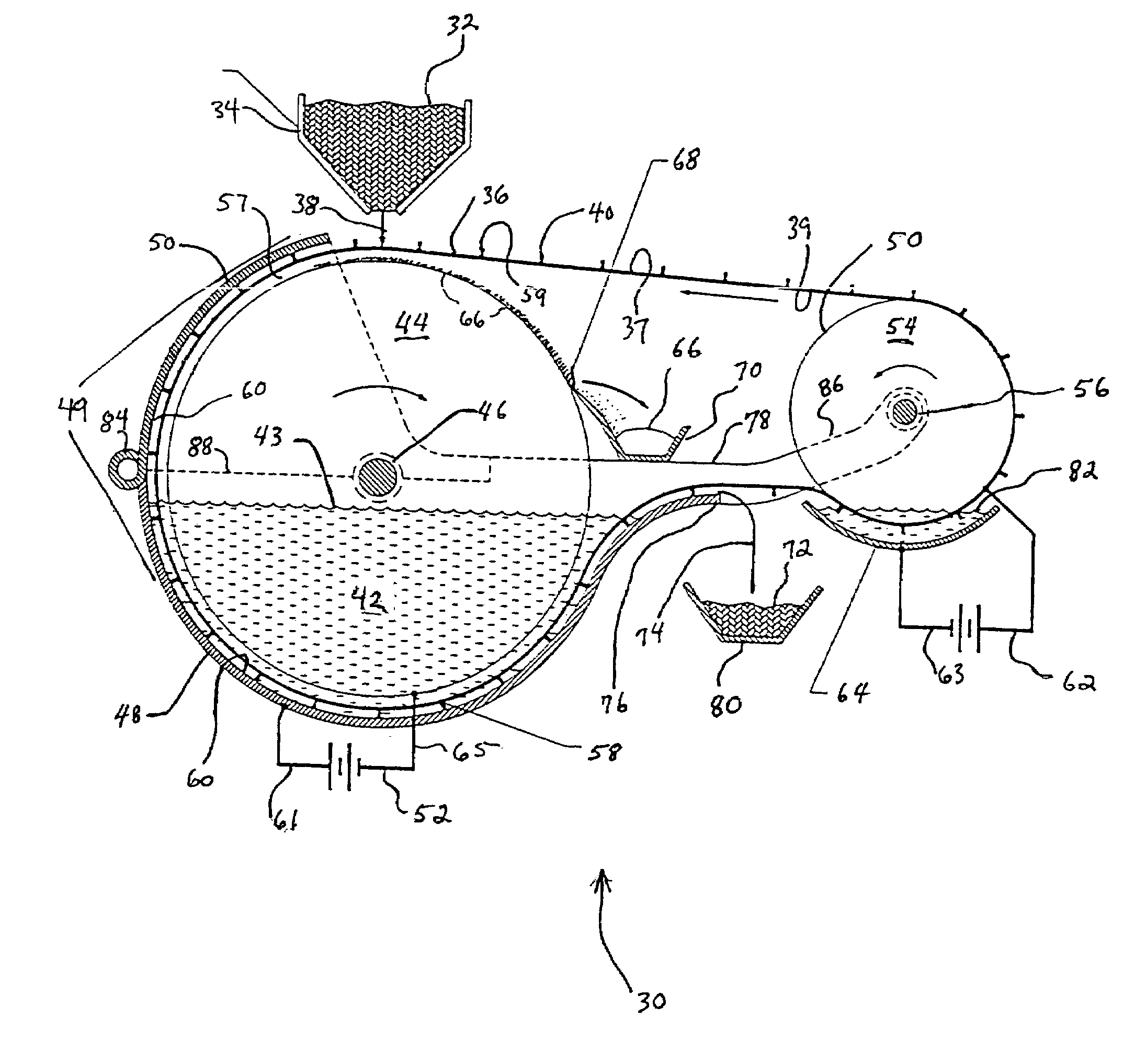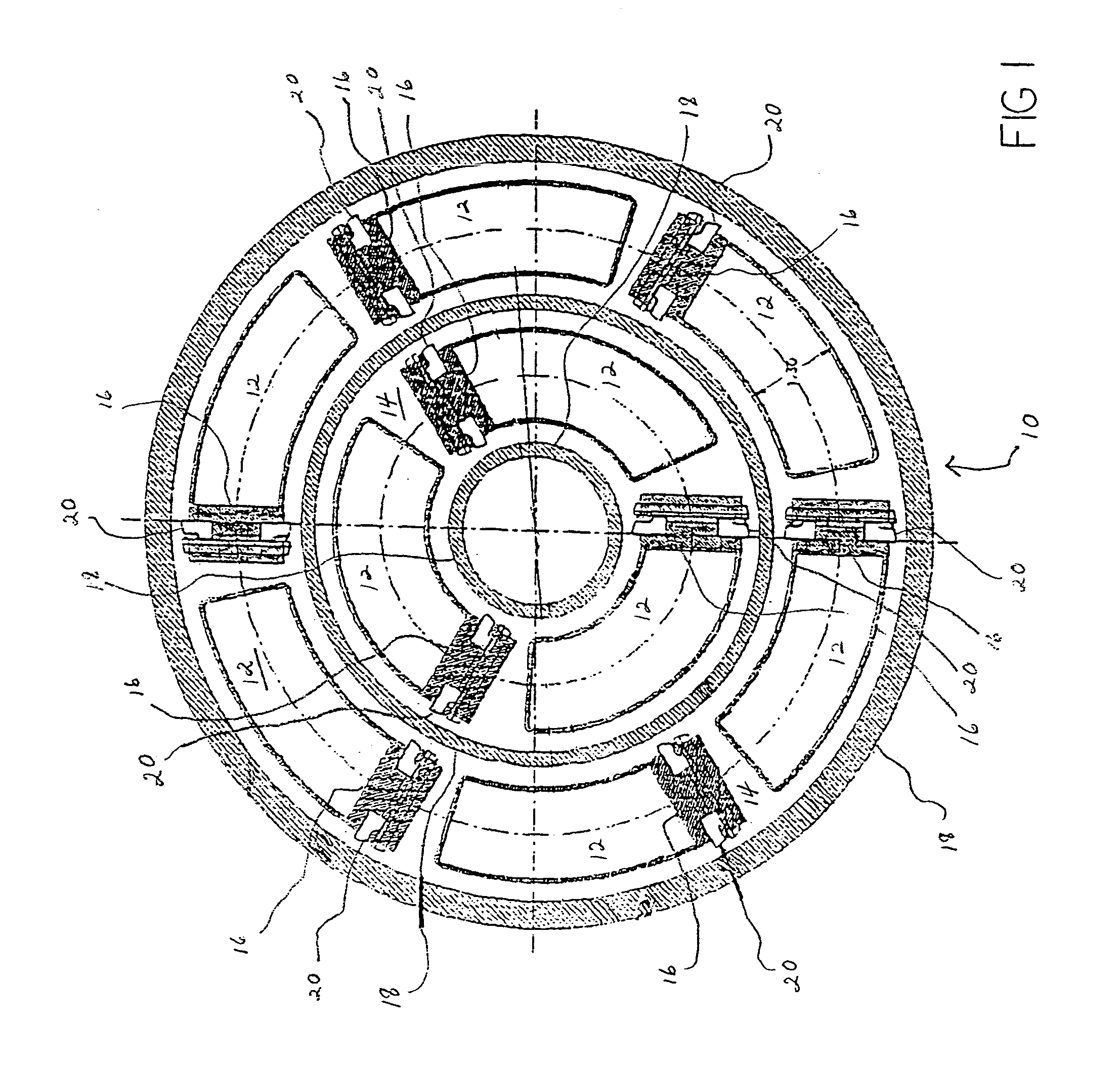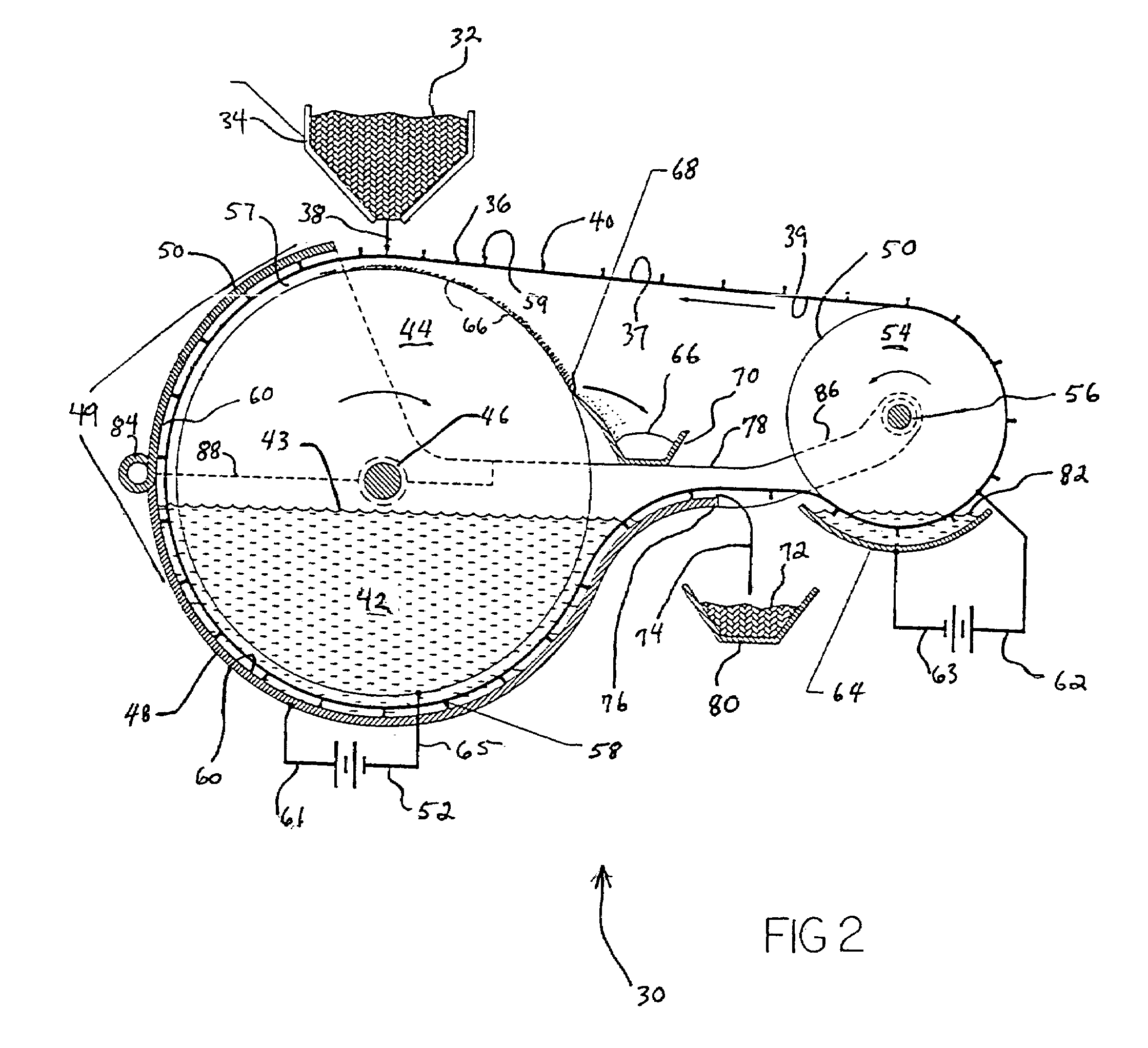Continuous process electrorefiner
- Summary
- Abstract
- Description
- Claims
- Application Information
AI Technical Summary
Benefits of technology
Problems solved by technology
Method used
Image
Examples
Embodiment Construction
[0050]The instant invention provides a device and process for the isolation and recovery of materials homogeneously dispersed in a substrate. Specifically, this invention provides a device and a process for processing spent nuclear fuel typically presented as spent fuel rods. The invention comprises an electrorefiner which allows for direct, and most importantly, continuous and uninterrupted electrochemical processing of spent metallic nuclear fuels containing uranium, transuranic metals, zirconium, and a mixture of rare earth metals, gases and other metals which result as fission products. Further, the instant invention isolates uranium from the other metals present in the spent metallic nuclear fuel matrix, and simultaneously purifies the uranium into its metal phase. The device embodying the invention is self-cleaning.
[0051]A schematic diagram of an exemplary device and process is depicted in FIG. 2 as numeral 30. This device 30 can be located in situ or off-site from the point w...
PUM
| Property | Measurement | Unit |
|---|---|---|
| Temperature | aaaaa | aaaaa |
| Melting point | aaaaa | aaaaa |
| Heat | aaaaa | aaaaa |
Abstract
Description
Claims
Application Information
 Login to View More
Login to View More - R&D
- Intellectual Property
- Life Sciences
- Materials
- Tech Scout
- Unparalleled Data Quality
- Higher Quality Content
- 60% Fewer Hallucinations
Browse by: Latest US Patents, China's latest patents, Technical Efficacy Thesaurus, Application Domain, Technology Topic, Popular Technical Reports.
© 2025 PatSnap. All rights reserved.Legal|Privacy policy|Modern Slavery Act Transparency Statement|Sitemap|About US| Contact US: help@patsnap.com



